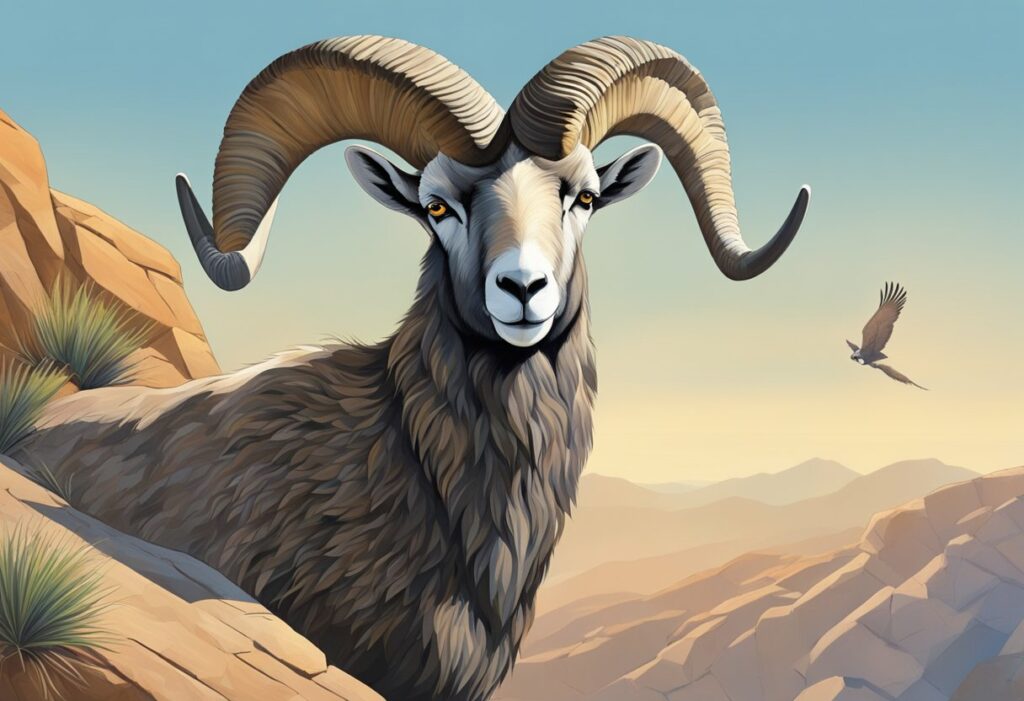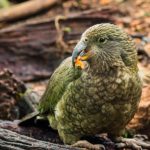Welcome to the Wild Side!
If you thought the Grand Canyon was just a vast expanse of spectacular rock formations, you’re in for a furry and feathery surprise. This natural wonder is a real-life lineup of ‘Canyon Cribs,’ starring the most eclectic cast of critters you could imagine.
Mammals of the Canyon
Cougars and Bighorns and Bats, Oh My! Just when you thought you could hike without an audience, think again. The Grand Canyon is home to 91 species of mammals, from the stealthy mountain lions sneaking around like they own the place, to the herds of bighorn sheep putting the ‘rock’ in rock climbing. Don’t forget the winged nocturnal wonders; bats make up a whopping 18 of these species! Here’s a snapshot of who you might bump into:
- Mountain Lions: Might give you the cold shoulder; they’re the secretive types.
- Elk: These antlered giants love a good selfie with tourists.
- Mule Deer: Often spotted at the Canyon’s ‘cafeterias,’ also known as the green patches.
Feathered Flyers
A Birder’s Paradise — With nearly 450 bird species, your neck will get a workout from all that skyward looking. And oh, the variety! See that shadow overhead? Could be the California condor, showing off its whopping wingspan. Or maybe it’s the peregrine falcon, diving faster than your last internet speed test. Here’s a beak-peek:
- California Condor: Big, bold, and under a conservation spotlight.
- Peregrine Falcon: Speed demons of the avian Autobahn.
Remember, binoculars are your best friend here unless you’ve got supervillain vision. Keep an eye, and an ear, out for their melodic tweets; it’s not all about the internet, you know.
Critters of the Crevice
You won’t need a safari hat or a pair of binoculars to spot the scaly and skittering tenants of the Grand Canyon. These critters have mastered the art of desert living, turning the crevices and corners of this natural wonder into a bustling metropolis of the non-human kind.
Reptilian Residents
Chilling out in the cracks and soaking up the sun, lizards, and snakes are the cold-blooded kings of the canyon. You might catch a glimpse of the audacious Chuckwalla lizard, which is pretty much the heavyweight champ of the U.S. lizard league. These chunky sun worshippers are experts at playing hide and seek within the narrow gaps between rocks.
Venturing deeper, keep your eyes peeled for the mesmerizing dance of the Grand Canyon rattlesnake, which, contrary to what you might think, isn’t shaking its tail to make friends. It’s always a good policy to admire these reptilian marvels from a respectful and non-handshake-worthy distance.
Insect Inn
Get ready to unzip the tiny world of six-legged wonders, because the Grand Canyon is crawling with insects that could out-survive reality TV stars. For a bit of glitz and glamor, you can spot a variety of butterflies and moths, putting on a color show that rivals the canyon walls at sunset.
And let’s not forget about the industrious bees and ants, which could teach world leaders a thing or two about efficient operations. Witnessing their hustle will either inspire you to new heights of productivity or convince you it’s time for a vacation.
River Residents
Ever felt envious of the aquatic lifestyle? The Colorado River running through the Grand Canyon is more than just a lifeline for tourists on rafts; it’s a bustling metropolis for a variety of river critters. Now, let’s dive into the watery world of the Grand Canyon’s river residents.
Fish Frenzy
You might not find Nemo or Dory here, but the Colorado River hosts some finned locals you’d be excited to meet. If you fancy casting a line, know that Rainbow Trout have a strong presence here, always ready for a game of “catch me if you can”. But it’s not just about the sporty trout; you also have the Humpback Chub, a native fish that’s decidedly more prehistoric-looking and less cuddly. These guys are a rare sight, as they’re quite the homebodies, lurking in the deep, turbulent waters. Remember, they’re ones to respect from afar—these finned friends are on the endangered species list, so keep your hands to yourselves!
Nocturnal Neighbors
When the sun dips below the towering rims of the Grand Canyon, it’s not just the stars that come out to play. Your flashlight might just catch the glowing eyes of the park’s night-time critters.
First up, meet the ringtail. No, it’s not a superhero, but it does have a super trick up its sleeve: when feeling threatened, it emits a potent smell to make predators think twice. Remember not to confuse the odor with your camping buddy’s socks!
Let’s not forget the mountain lions; these felines are as stealthy as your cat at home when it knows you’re about to take it to the vet, only much, much bigger. They’ve got night vision that would make your high-tech binoculars green with envy, enabling them to navigate the dark like a breeze.
Dare to venture out at night, and you might hear the ghostly howls of the coyotes or the rustling of bats as they swoop through the air snatching up any bugs that dared stay up past their bedtime.
And just in case you thought the ground was safe, think again. The bark scorpions are more than happy to scuttle around in the moonlight.
| Critter | Specialty |
|---|---|
| Ringtail | Stinky superpower |
| Mountain Lion | Night vision |
| Coyotes | Eerie serenades |
| Bats | Aerial acrobats |
| Bark Scorpions | Moonlit scuttlers |
So, grab your flashlight and your sense of adventure, because at the Grand Canyon, the night is where the wild things are!
Sky-High Species
As you crane your neck upwards, you’ll discover that the Grand Canyon’s airways are just as bustling as the river below—minus the white-water rapids, of course.
Bats in the Belfry
Believe it or not, your chances of playing peekaboo with one of the Grand Canyon’s 22 species of bats are higher than spotting your favorite celebrity hiking the trails. These nocturnal sky-dwellers prefer the nightlife and are avid insect hunters. Each night, they transform the canyon into their personal all-you-can-eat buffet, skydiving for dinner with precise echolocation. The next time you’re gazing at the stars, remember that you’re not alone—somewhere out there is a bat doing its best superhero impression.
Plants: The Silent Neighbors
You might think the Grand Canyon is all about monumental rocks and jaw-dropping views, but let’s not overlook the real, unassuming rock stars: the plants. These silent neighbors are more than just a pretty backdrop; they’re the oxygen-brewing, erosion-battling, shade-providing heroes of the canyon.
Canyon Greenery
Imagine a plant so tough, it laughs in the face of scorching heat and says “bring it on” to bone-chilling cold. These are the trees at Grand Canyon, ranging from the towering Ponderosa Pines to the resilient Utah Junipers. They stand tall, determined to strut their stuff from rim to river.
Next up, the mighty shrub. Not to be overshadowed by their taller cousins, these plants are the middleweight champions of desert survival. Species like Sagebrush and Rabbitbrush are content being, well, short and stout. They don’t vie for height but play a crucial role in the ecosystem, providing habitat and food for canyon critters.
Let’s not forget the prickly pageant winners: the cacti and succulents. These spiny wonders conserve water like nobody’s business and dazzle with their showcase of blooms. And hey, they might be pokey, but they’ve nailed the art of desert living.
Down by the water, where the air smells like a freshwater creek at dawn, the riparian plants hold court. They line the banks, soaking up every drop and whispering sweet nothings to the fish and amphibians. It’s a lush, green world down there—a stark contrast to the dryness above.
And for a dose of color, the wildflowers pop up like nature’s own confetti, wowing visitors with a spectacle of hues. You haven’t lived until you’ve seen a desert marigold basking in the sunset.
Remember, as you snap your next selfie by the canyon edge, give a little nod to these silent neighbors. Without their leafy presence, the Grand Canyon would be like a movie without a soundtrack—still great, but missing that spark of life.
Rare Sightings

When you’re at the Grand Canyon, keep your eyes peeled for some of the park’s more elusive residents. You might just hit the jackpot with a rare sighting!
Mountain Lions: These big cats are the ninjas of the Grand Canyon. Your chances of seeing one are about as good as stumbling upon a unicorn, but hey, miracles happen! See what the National Park Service has to say about these secretive felines.
California Condors: With a wingspan wider than your average smart car, these birds are hard to miss—if you can find them. They’re like celebrities of the sky, rare and awe-inspiring, lucky for you, they do call the Grand Canyon home. More info on these giant flyers can be found at the Grand Canyon Trust.
-
Bison: These shaggy beasts aren’t just a Yellowstone attraction; a small herd roams the North Rim. Spotting them is as rare as getting a perfect photo with all your friends looking at the camera and with eyes open!
-
Bobcats: Masters of stealth and solitude, if you spot a bobcat, consider yourself part of an exclusive club. They don’t do autographs, though.
Keep your camera at the ready and your gaze sharp, you might just luck out. Remember, no flash photography—let’s not blind the talent!
Conservation Efforts
Alright, let’s dig into the crusade to keep the Grand Canyon from turning into a wildlife party of just tumbleweeds and one lonely cactus.
Park Protectors
Ever think of a park ranger as a superhero? Well, in the Grand Canyon, they’re the caped (okay, maybe just hatted) crusaders whose daily grind is to safeguard the wildlife. From tracking the movements of the elusive mountain lions to ensuring the tiny hummingbirds don’t have to compete with drones for airspace, these rangers are all in. Their arsenal includes educational programs, so you’re not just snapping pics but learning why feeding squirrels is a no-no (spoiler: it’s not because they’re on a diet).
Your visit is their mission, so slip on those hiking boots and wield your binoculars with responsibility, because you’re part of the team now. Remember, those trash cans aren’t just for decoration; they’re part of the grand plan to keep the canyon grand for every critter that calls it home.











